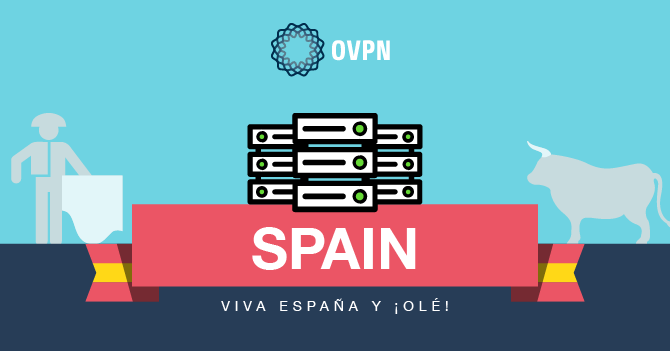
We're happy to announce that we have a VPN server in Madrid. Madrid is our first data center in Spain and we hope that it'll offer all our Spanish customers even better speeds than endpoints in other countries.
As always, the VPN server in Spain is physically owned by us and contains zero hard drives, is completely log free and has the same security features as in all of OVPN's datacenters.
Accessing the VPN server in Madrid, Spain
There are a couple of different ways to connect to the VPN server in Madrid.
Desktop client
As old server lists may be cached from before the servers were launched, please note that you might be required to manually log out and log in again to load the new server list. If you have yet to install the OVPN Desktop client, you can get started here.
- Login to the OVPN Desktop client
- Option 1: Choose "Select best server in Spain" in the first drop-down menu and press connect.
- Option 2: Choose "Select server manually". Select the new server in Madrid in the server list and press connect.
OpenVPN GUI and third party systems
To connect with OpenVPN GUI, Tunnelblick, Viscosity or any other third party VPN client, new configuration files for the Madrid have been made available in each of their guides. Simply select your corresponding setup guide here and follow the steps.
Data center & server specifications
We're currently renting 1U in Interxion's data center on Street Calle Albasanz, 71. As of now, we have a 1 Gbit/s uplink to M247. Our peering capabilities are Tata, NTT, Cogent, Level3, Telia & DE-CIX Madrid.
As soon as we get close to reaching the max capacity of the server, we will make sure to send additional servers in order to continue delivering great speeds to our customers.
The server in the rack is of model Dell EMC PowerEdge R230 and is equipped with an Intel® Xeon® E3-1220v6 3.5 GHz processor, 8 GB RAM and 2x1 GbE Intel NICs. Just like in all other datacenters, the server operates without any hard drives or any other form of permanent storage.
Picture of the server
Our previous solution was to colocate three VPN servers and a switch per data center. That approach turned out to be too expensive as we needed to rent 10 height units in a rack as well as purchase the needed hardware. We have modified our deployment setup, so we only need to colocate one server, without reducing any of our security requirements.
Can you guess which server that is ours in the image below? A hint is that it's the server without any hard drives.


